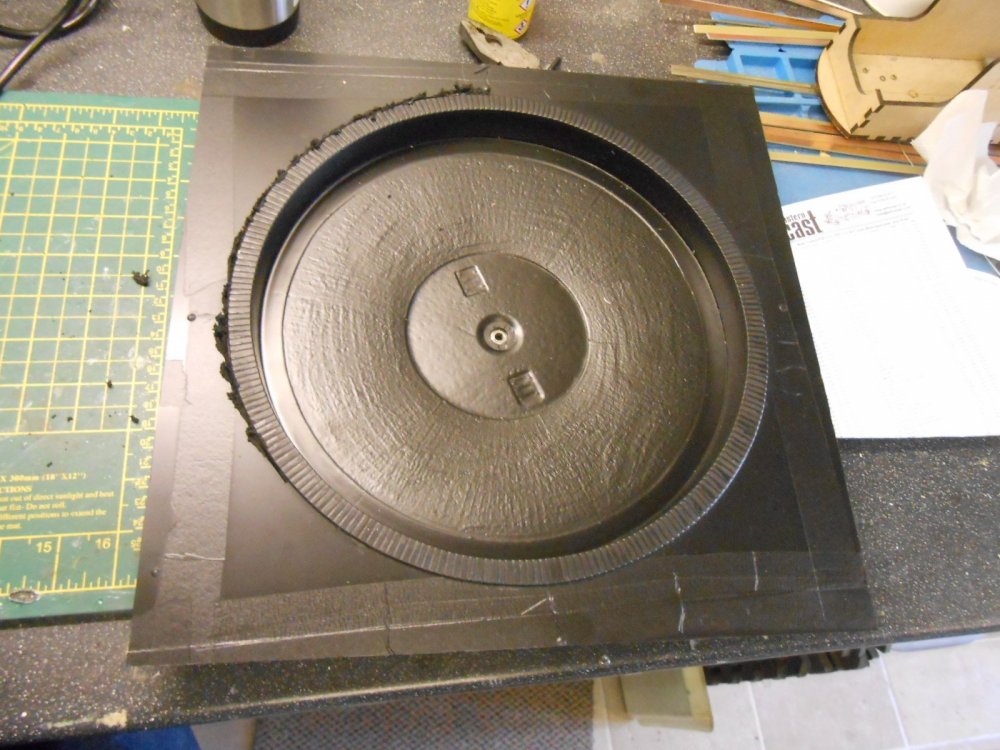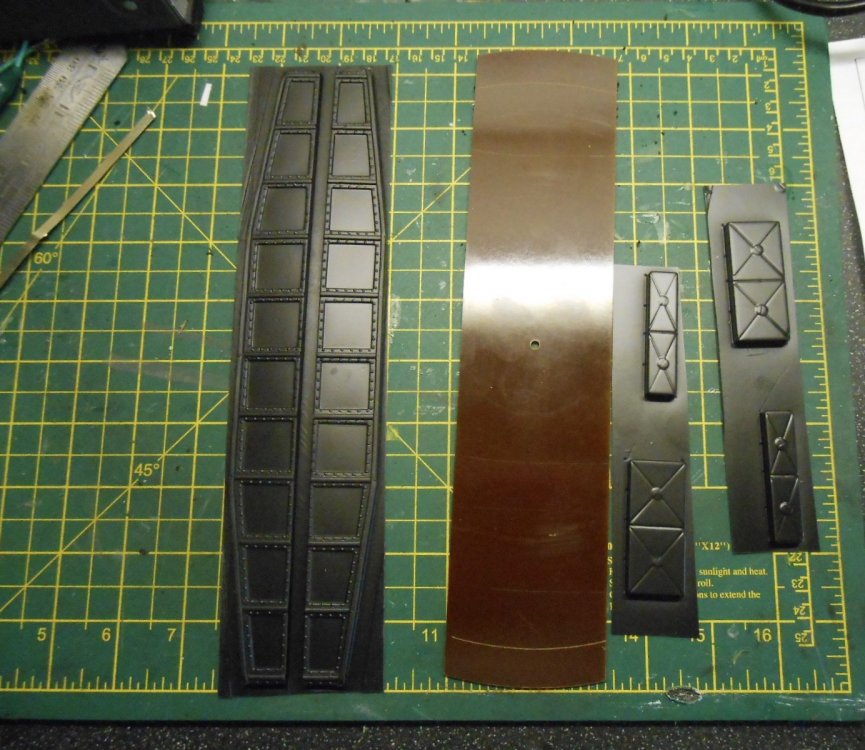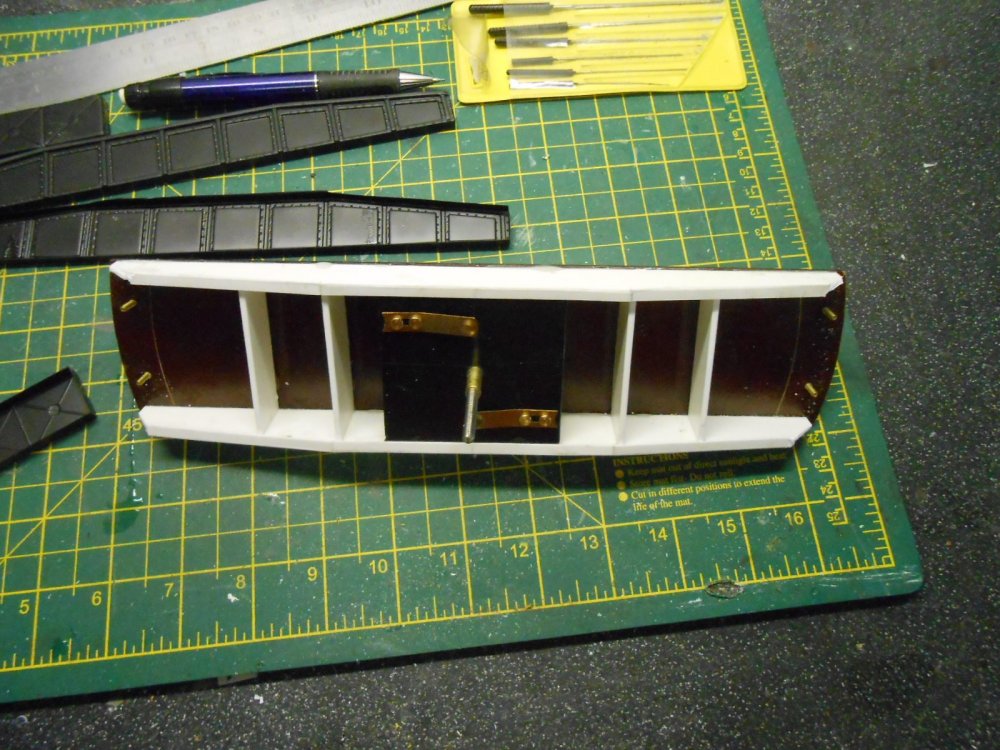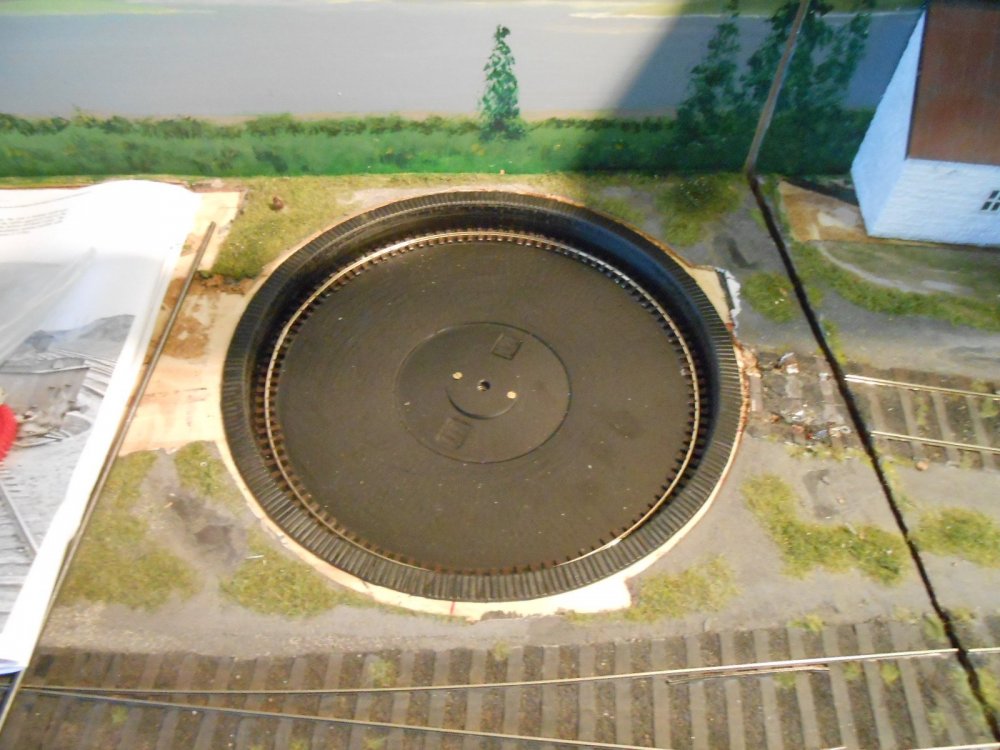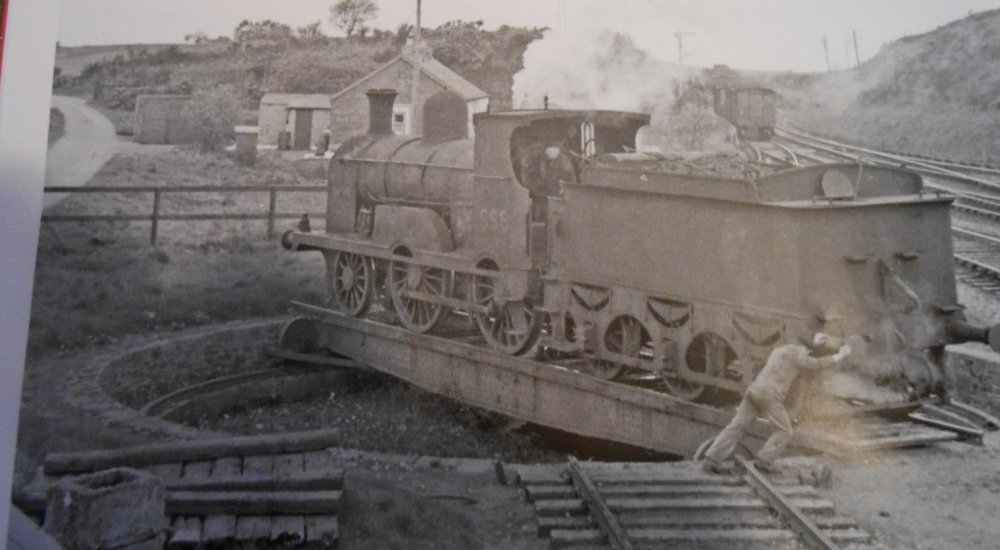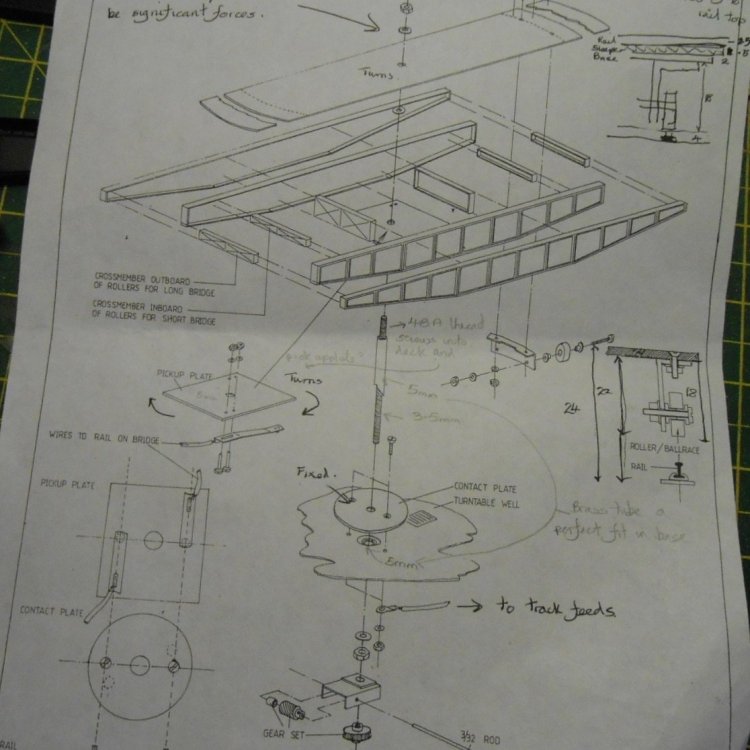
David Holman
Members-
Posts
4,338 -
Joined
-
Last visited
-
Days Won
117
Content Type
Profiles
Forums
Events
Gallery
Blogs
Store
Community Map
Everything posted by David Holman
-
He does say Sir Henry was running and riding really well at the time, but I also wondered if 60 was a typo and it was actually 50.
-
Different, to say the least and well down the list of potential ready to run models, methinks! May be odd, but the modelling certainly isn't. Another classy build going on here.
-
Neil Sprinks history of the SLNCR notes several 'might have beens', not least a branch down to the Arigna mines, for which there were a couple of proposed routes. Had the one down the west side of Lough Allen been built, it would have gone past the eventual site of the power station which took all the Arigna coal from 1959. The branch would have been wholly in the Republic, while the power station stayed open until the early '90s. Hence an Arigna branch may well have kept the later 0-6-4Ts going into the '60s, before Baldwin power took over, with maybe a G, plus Railcar B, of course. All in my Arigna Town thread and was tempted to pursue the dieselisation theme for a while. There was also a proposal for a line to Swalinbar and beyond, plus there is the 2-6-6-2 Garrett that Beyer Peacock offered. Somebody has built one in 7mm scale, but am guessing 2FS might be a bit of a challenge, though I do have a drawing if anyone is interested! On a different note, managed to get a secondhand copy of Colin Boocock's Irish Railway Album at a show last weekend. In the short section on the Sligo he writes that Sir Henry reached 60mph between Collooney and Sligo on the 7.40pm mixed from Enniskillen. Given the nature of the train itself, even though the cattle wagons had been detached, 60mph with 4'9" drivers seems a bit fanciful. Any truth in this?
-
Conversion of the real thing to broad gauge wasn't easy. Apparently, they had to turn the wheels down to fit inside the splashers - the opposite of modellers thinning the insides of splashers and bodywork so over thick wheels will fit. Another thought re motive power would be via visitors from the south (as per Arigna Town). Not sure whether any 2mm diesel bodies are available (3D printing?), for A, C or Baldwin's, but the latest RM has an article where a Lima 33 was converted to an A in 7mm scale, so in 2mm a passable likeness ought to be more than possible?
-
Eoin's probably the man for this, but tight spots when adding coupling rods are pretty common. Indeed the only time I don't get them is when scratch building a chassis when the rods are used to drill out the axle holes in the frames - hence everything lines up. However, two axles are easier than three and it is probably just as case of reaming the coupling rod holes a little at a time until they turn smoothly.
-
LEDs worth a try, you can get short strips for interiors that only need a simple 12v supply. Have also used LED strip for layout lighting for several years now. Try LED Hut [find them on Google], the service is excellent. The 'cool white' strips I use on Fintonagh seem to work well. They come on a self adhesive roll that can be fixed to the front pelmet, plus they can also be put in extruded aluminium strip to go over the back of the layout.
-
New Turntable Argna Town's turntable was a much breathed on [and sworn at] Dapol/Airfix kit, which cost me the princely sum of £5. I made it underslung, added a Freezinghall Models hand cranked turning mechanism [essentially some bits of Meccano] and it generally worked well for over 30 shows. However, for the Belmullet rebuild I wanted something a bit more robust. I thought I'd found it in the form of Kitwood Models 10.5" laser cut kit. It looks a really good product, though I was told by the proprietor that it might not be strong enough for my 7mm scale locos. Nevertheless, I still wanted to have a go, but have been waiting since May for the kit to be available - something to do with the motors not being ready yet. Indeed, the website currently says 'available September'. Hmm... However, at the Uckfield show last weekend, I suddenly remembered that South Eastern Finecast do a turntable kit and a chat with them on their stand quickly found they did indeed have one for sale. Intended as a replacement for the Dapol/Airfix kit, you can even use the latter's deck parts if you want, while the base [made from a strong looking single black plastic moulding fits exactly the same sized hole as the Dapol/Airfix one. This last fact became a bit of a no brainer, so I shelled out £50 there and then for the kit. The first job was to cut away the surrounding plastic, to leave the circular well which then dropped neatly into place. The rim of the well has brick/stonework moulded on, while the base has a small ball bearing moulded in the centre to take the pivot. The deck is a pice of 2mm thick paxolin, while a range of while metal castings make up things like spacers, bearing wheels and so on. Electrical pick up for the track comes from phosphor bronze wiper pickups touching brass screws in the base. The deck girders are a bit disappointing though, being flimsy vacuum mouldings. I therefore decided to make a new set of girders from 80 thou [2mm] plastic sheet. This has been glued to the deck with 5 minute epoxy, making a strong, rigid structure, albeit as yet undetailed. It will eventually be modelled on the one at the junction for the Ballahagadereen brach [see picture]. The decking girders are intended to run on flangeless, white metal wheel castings, but in the interests of smooth running, I will replace these with miniature ball bearings. The 'track' they run on is cut from a length of Peco Code 75 flat bottomed track. I simply cut it down the middle with strong scissors and then using Pi x diameter got the right length of 81cm. The single rail and sleepers sit neatly against the wall of the well and is held in place with impact adhesive. So far, so good. However, I am currently having problems getting the deck to rotate smoothly, as the paxolin is slightly too big for the well and needs filing back a little. I am also suspicious of the instructions, which suggest using Romford 40:1 gears and 3/32" rod for a hand cranked mechanism. This seems far too flimsy for my 7mm scale locos, so am hoping to use the Freezinghall mechanism again. A further problem is there is scant information in the instructions about how the deck girders are to be fixed to the central pivot. The latter is 4BA studding, with just a nut to hold it to the deck. As far as I can see, there is zero chance of that working, so am hoping that a combination of 24 hour Aradite and Loctite 630 jointing compound in the threads [top and bottom, will do the trick. Will certainly be interested to hear of any other ideas & the final picture might help as it is the exploded diagram of the whole kit.
-
Always a good feeling to know the chassis of a loco kit is going well!
-
Like how the aerial view shows the geography of the scene. Am sure the depth of it is also why it works well. In 7mm scale I'd need about five feet to do that!
-
Great to see general pics of the layout, not surprised IRM wanted to show their locos on it. A fine combination! As for the Deltic, growing up on the East coast main line at Newark, saw all of them, many times, in my spotting days and it was always a treat going to/from college in London to have a Deltic instead of the ubiquitous 47s. Most memorable run was on the Aberdeen mail out of Kings Cross. Loaded to 15 bogies, around 500 tons, it did Grantham to Newark (14 miles or so), in just over 12 minutes, start to stop. The howl of the twin engines going through Peascliffe tunnel from the first coach (window down of course!), was incredible. Was convinced it wasn't going to stop at Newark and I'd have to find my way back from Retford, but a very late brake application got me home. It was a fine piece of driving and the loco really must have been on the limit. Regularly timed them at over 100mph and seem to recall up to 110 wasn't unusual in Railway Magazine reports.
-
Nice one! The addition of a front view blocker works really well in the pictures and puts the whole scene in its proper context. In some ways a bold move to put the focus of the diorama further back, but for me it balances the scene and frames it so the viewer is on the platform, looking in and everything appears bigger too.
-
For the Irish scene, you will eventually be stymied once you get to a 2-10-0!
-
For me, nothing says Irish railways better than 21mm or 36.75mm track. The Peco code 75 certainly looks so much better than code 100 though, especially if you can keep to a low viewing angle. See Patrick's layout thread for that. However, would still say doing 21mm is worth a try. Plain track is easy to make using C&L components, while points could be custom made by the likes of Marcway, or again have a go yourself with C&L. The only thing you'd need to find/have made is a suitable roller gauge. 21mm is not about P4 either, finescale 00 clearances (one mm flange ways) will be fine. One point and a couple of lengths of plain track should only take a couple of hours using C&L parts, with no soldering required either. Worth thinking about.
-
Certainly looks the part.
-
A GNRI 2-4-2T? Nice prototype and what looks like a fairly simple chassis. Am guessing the leading and trailing wheels will require a fair bit of sideplay, though two coupled axles should be easier than three. A logical progression from a single, methinks! Have built several Alphagraphix Tyrconnel kits and though fairly basic, they seem to go together nicely, so will look forward to seeing progress.
-
That is going to be a very impressive rake.
-
In this month's Continental Modeller, there is an article doing a cut and shut with a Britannia to create a freelance South African Pacific. All about character and this model has plenty and even if it is freelance, it really looks the part. The large scale WW1 trench layout also features.
-
All that is needed for curved edges is some thicker microstrip, say 80 or 100 thou, welded to the inside seams. This means you can then file and sand radiuses edges and corners with any fear of making holes in the sides. There again, the were square edged tanks, so either will do.
-
Some video footage of Fintonagh at the recent EuroEx show in Birmingham. Fintonagh is at about 16-17 minutes, but there is some nice footage of the other layouts, including the large scale WW1 trenches depot.
- 266 replies
-
- 11
-

-
Just goes to show what you can learn from being a railway modeller. Looks like I have some remedial work to do on my tank now!
-
There was an article in Model Railway Journal, by John Birkett-Smith last year, where the back scenes were in layers - a profiled piece of MDF fixed direct to the baseboard, then a separate skyboard, set a few mm out, behind it. The effect looked really good. On both Arigna and Fintonagh, I use quick mounting plates to hang pelmets, fascias etc and they work very well.
-
Not just any old crossing vee! Lovely touch and authentic details like this really bring a model to life.
-
Thanks guys, though no peat fire ash? Sifted garden soil works well too, apparently. We used to have a multifuel heater, before gas arrived in our street and I used phurnacite ash quite a bit for ballast. Gives off a pretty sulphurous smell when mixed with dilute PVA though! Several of our neighbours still burn the stuff, so I may well go calling.
-
Another thought, check the balance of the loco - does it pivot on the centre axle? If not, you'll need to add more weight to the other end.
.png.c363cdf5c3fb7955cd92a55eb6dbbae0.png)

